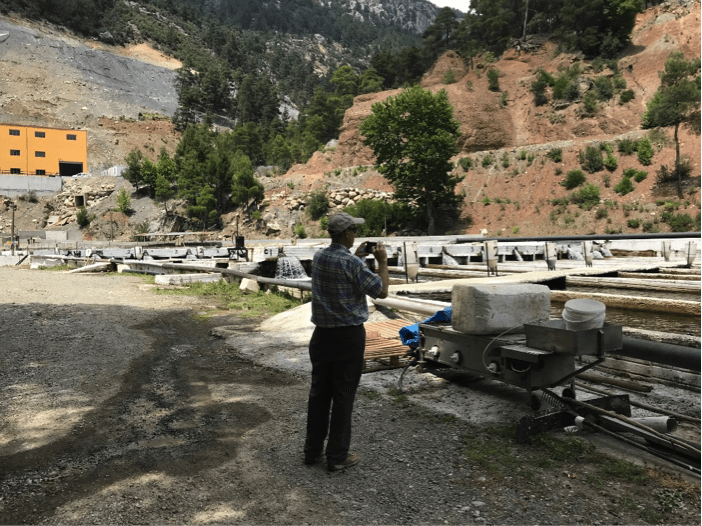Turkish Trout, Marine Farmers Utilize IPRS for Efficient Production
- Category:
- Aquaculture
- General News

USSEC has had a long-term goal of the promotion of an increase of aquaculture production using high quality feeds. The In Pond Raceway System (IPRS) is an initiative that achieves both of these at once. IPRS allows farmers to use the same water volume in ponds to produce a significantly higher yield, and the technology favors complete, high quality feeds that are well suited to feeds that use U.S. Soy products.
USSEC recently made an investigation about trout farmers and earthen pond marine farmers in Turkey to use IPRS system. USSEC consultant Skip Kemp and USSEC Country Representative – Turkey Sirri Kayhan visited trout and marine farms producing trout in different systems and seabass and seabream in earthen ponds. These visits allowed USSEC to understand the needs of trout and marine farmers and their problems. The visits were conducted to see lake cage systems, concrete raceway systems, canal raceway systems for trout, and earthen ponds for marine species.
As a result of this investigation, USSEC found that the IPRS operating and design principles including the raceway-type structures, the blowers and white water type aeration devices, and the waste collection in the quiescent zones will be a huge benefit to the Turkish trout and earthen pond marine producers. Because the problems experienced in these farms such as low dissolved oxygen, meeting government regulations on organic loading from waste and silt build-up and disease problems could be addressed with the IPRS. If these concepts can be integrated successfully to Turkish aquaculture operations it could greatly increase rainbow trout and seabass and seabream production with concomitant increases in feeding high quality soy products, resulting in benefits for U.S. soybean farmers.


